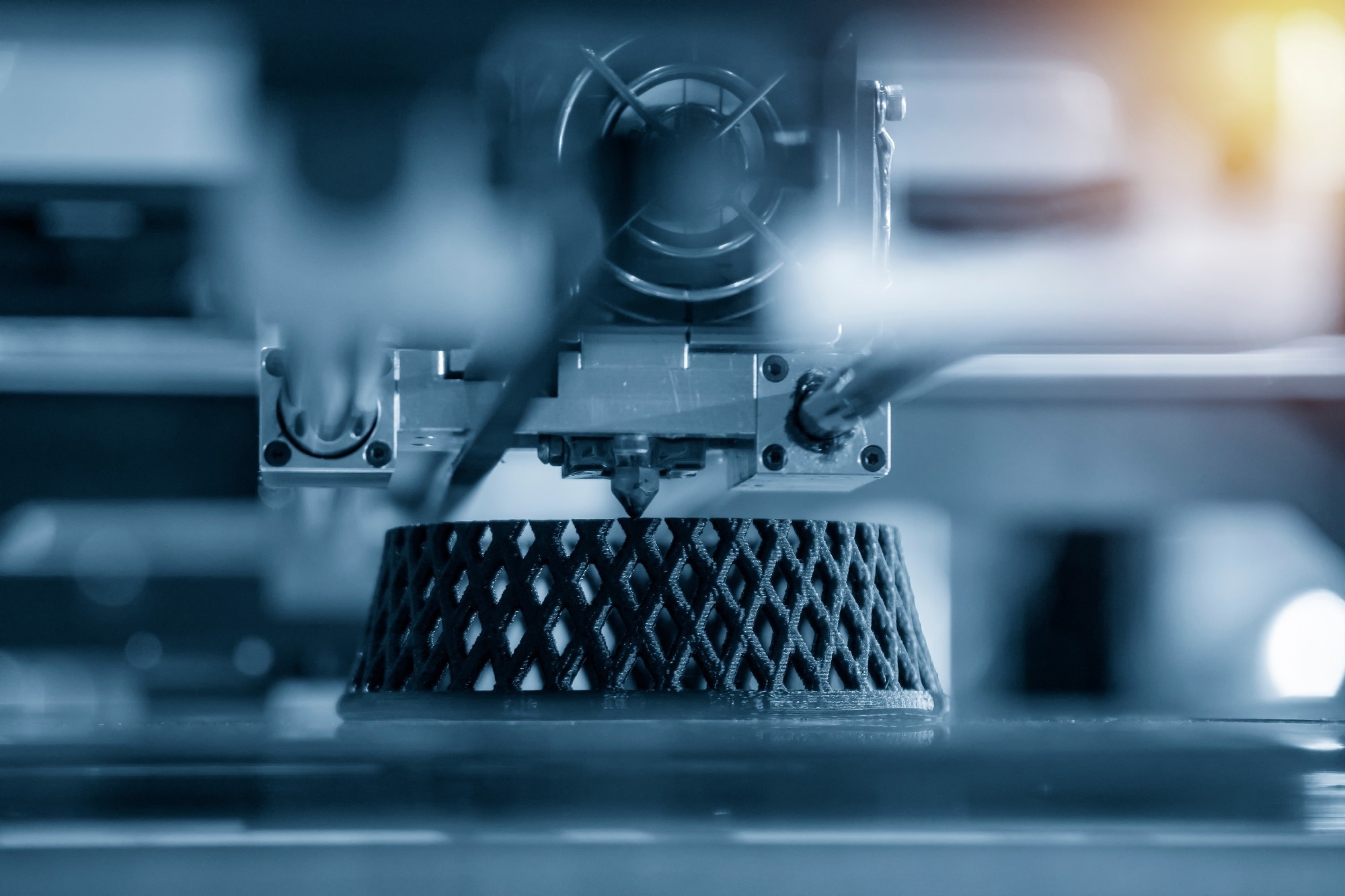Reviewed by Mila PereraSep 22 2022
According to the researchers, drones could eventually be utilized for manufacturing and construction in hazardous or difficult-to-access areas, such as tall buildings, as well as assistance with post-disaster relief projects.

Image Credit: Shutterstock.com/Pixel B
The use of 3D printing in the construction sector is expanding. Static and mobile robots print materials for building projects, such as steel and concrete structures, both on the work site and in the factory.
This innovative method of 3D printing, pioneered by Imperial and Empa, the Swiss Federal Laboratories of Materials Science and Technology, uses drones to employ collective building techniques modeled on the cooperative building techniques used by bees and wasps to build complex, large-scale structures.
The fleet’s drones, collectively known as Aerial Additive Manufacturing (Aerial-AM), collaborate using a single blueprint and modify their methods as they go. While in flight, they are completely autonomous, but a human controller monitors them and intervenes if necessary, depending on the data the drones provide.
We have proved that drones can work autonomously and in tandem to construct and repair buildings, at least in the lab. Our solution is scalable and could help us to construct and repair building in difficult-to-reach areas in the future.
Mirko Kovac, Study Lead Author and Professor, Department of Aeronautics, Imperial College London
Printing 3D Geometries
As a construction project progresses, Aerial-AM uses both a 3D printing and a path-planning framework to assist the drones in adapting to changes in the structure’s geometry.
The fleet is comprised of BuilDrones, which drop materials while in the air, and quality-checking ScanDrones, which continuously monitor the output of the BuilDrones and provide information for their further manufacturing stages.
For the drones to build, the researchers created four custom cementitious mixtures to test the idea.
The drones continuously evaluated the printed geometry during the build and changed their behavior to guarantee compliance with the build requirements to a manufacturing accuracy of five millimeters.
The proof-of-concept prints featured a 2.05 m-high cylinder (72 layers) made of polyurethane-based foam and an 18 cm-high cylinder (28 layers) made of structural cementitious material specifically produced for the project.
Future construction and maintenance projects could use this technology to reach high or difficult-to-reach areas. The researchers will collaborate with construction companies to evaluate the solutions and provide manufacturing and repair capabilities.
We believe our fleet of drones could help reduce the costs and risks of construction in the future, compared to traditional manual methods.
Mirko Kovac, Study Lead Author and Professor, Department of Aeronautics, Imperial College London
Journal Reference
Zhang, K., et al. (2022) Aerial additive manufacturing with multiple autonomous robots. Nature. doi:10.1038/s41586-022-04988-4